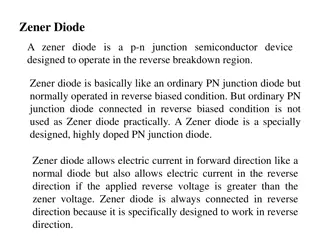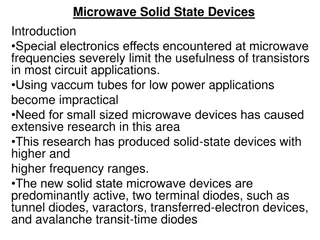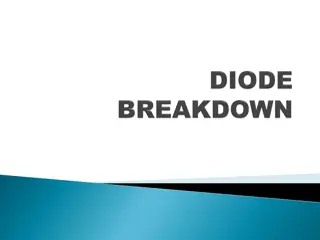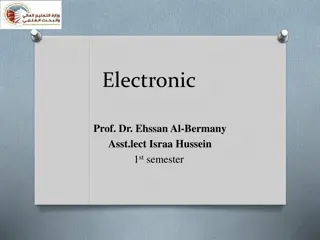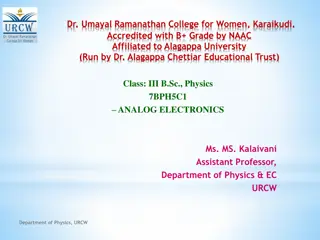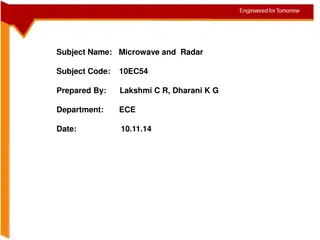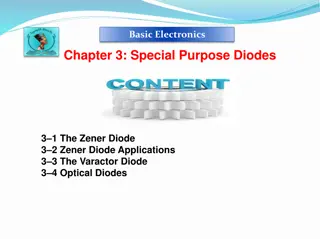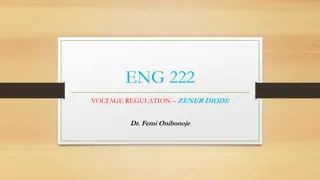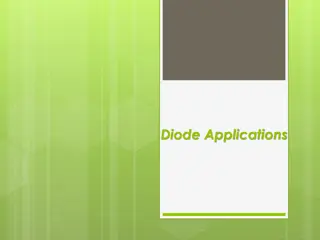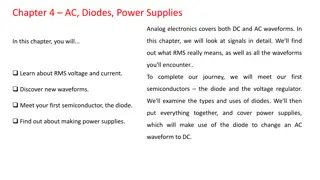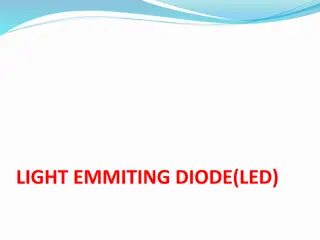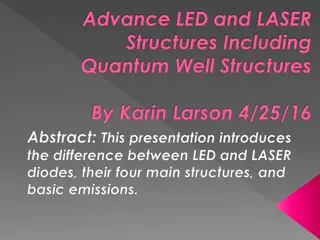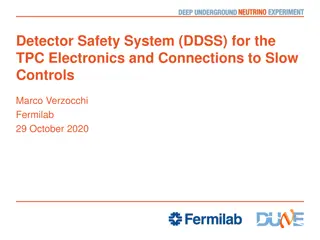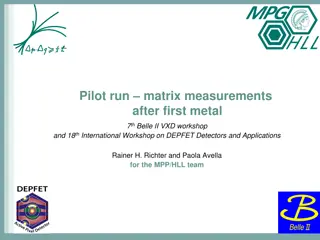Understanding Ideal and Real Diodes in Electronics
In electronics, an ideal diode behaves like a perfect switch with no voltage drop when forward biased and acts as an insulator with zero current when reverse biased. On the other hand, a real diode has a barrier potential and forward resistance to overcome when conducting current. The I-V characteristics of both ideal and real diodes showcase their behavior as switches in different biasing conditions, providing valuable insights for circuit analysis.
Uploaded on Oct 10, 2024 | 0 Views
Download Presentation

Please find below an Image/Link to download the presentation.
The content on the website is provided AS IS for your information and personal use only. It may not be sold, licensed, or shared on other websites without obtaining consent from the author. Download presentation by click this link. If you encounter any issues during the download, it is possible that the publisher has removed the file from their server.
E N D
Presentation Transcript
Ideal and Real Diode
Ideal Diode A diode is said to be an Ideal Diode when it is forward biased and conductor, with zero voltage drop across it. acts like a perfect Note Note: : voltage drop = voltage drop = I * I * R R Similarly, when the diode is reversed biased, it acts as a perfect insulator with zero current through it.
An ideal diode may be defined as a device which: a) When forward biased, conducts with zero resistant, act as short-circuit, and there is no voltage drop (even though current is there) since a short has zero resistant. b) When reverse biased, there is no reverse current because reverse resistant is infinite, and acts as open-circuits. It is helpful to think of an ideal diode as a bistable switch which is close in the forward direction and open in the reverse direction. Hence it has two stable states: ON and OFF.
I-V characteristics of the Ideal diode The I-V characteristics of the Ideal diode are shown in the following figures: An Ideal diode acts like a switch. When the diode is forward biased it acts like a closed switch as shown in the figure below: Whereas, if the diode is reversed biased, it acts like an open switch, as shown in the figure below:
Solution : Note Note: : power disspated = power disspated = I I 2 2 * * R R
Real Diode: A Real diode contains barrier potential Vo(0.7 V for silicon and 0.3 V for Germanium) and a forward resistance RF. When a diode is forward biased and conducts a forward current IF flows through it which causes a voltage drop IFRFin the forward resistance. Hence, the forward voltage VFapplied across the real diode for conduction has to overcome the following: 1- Potential barrier 2 - Drop in forward resistance
The I-V characteristic of the Real diode For all the practical purposes, a diode is considered to be an open switch when reverse biased. It is because the value of reverse resistance is so high (RR> 100 M ) that is considered to be an infinite for all practical purposes. The equivalent circuit of the real diode under forward bias condition is shown below: This circuit shows that a real diode still acts as a switch when forward biased, but the voltage required to operate this switch is VF.
a) Forward Direction: In this case, we have to take two factors into account: 1- Forward current dose not start flowing until the voltage applied to the diode exceeds its threshold or knee voltage VK(0.3V for Ge and 0.7V for Si). Hence, a real diode is shown as equivalent to an ideal diode in series with a small oppositely-connected battery of VK as shown in figure 4(a). 2- The forward dynamic or ac resistant (rac) offered by the circuit. So far, we considered this resistant to be zero implying that forward characteristic is a straight vertical line as in figure 4(a). If we take (rac) into account, the forward characteristic becomes as shown in figure 4(b). Here the reciprocal of the slope of this characteristic represent rac.
i) Large Signal operation: Large signal source are those whose voltage is much greater than the diode knee voltage VK( nearly equal to barrier potential VB ). Under such conditions, forward current would be large, so that rjwould be negligible. rac= rj+ rB rB ii) Small Signal operation: In this case, the signal voltage is small as compared with VK. Since IF would be small, rjwould be very large as compared with rB rac= rj+ rB rj NOTE THAT: NOTE THAT: racor rd= rB+ rj rj = 25 (mV) / IF(mA) for Ge = 50 (mV) / IF(mA) for Si
b) Reverse Direction: An actual or real diode does not have infinite resistance in the reverse direction because it will always have some reverse saturation current prior to breakdown. For example, if with a VR= 50 V, IRis 10 A, then RR= 5*106 = 5M . silicon diode have reverse resistant of many thousands of mega ohms. Hence, an actual diode in the reverse direction can be thought of as equivalent to a high resistor.
End End


